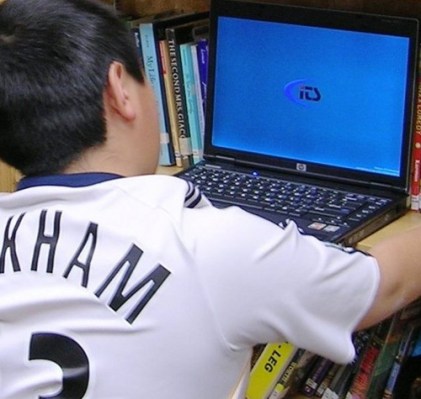Going mobile may be the mantra for a lot of tech companies these days, but if they’re in the business of targeting teenagers with their services, perhaps they should think twice: over 37 percent of teens use laptops, and a further 30 percent rely on desktop machines to surf online and engage with digital content, but only 13.5 percent use smartphones and only five percent use tablets, according to a new study out today from Intel-owned security specialists McAfee.
The study, covering online activity among U.S. teens, also reveals a pretty massive disconnect between parents and their kids when it comes to how the latter is using the Internet — with some big security implications within that — and the revelation that teens are not actually that rebellious compared to their adult counterparts when it comes to engaging with social media, in many cases using the same sites their parents do to communicate with each other.
McAfee, working with market analysts TRU, based their results on 2,017 online interviews in the U.S. among teens ages 13-17 and parents of teens ages 13-17, with respondents split equally among the two demographics.
By far, the most popular social media site among teens is Facebook, with 89.5 percent of respondents using the site. Twitter comes in second with 48.7 percent and Google+ not actually that far behind at 41.5 percent. Tumblr (33 percent of all teens), it notes, is more popular with teen girls than boys; while 4chan (23%) is showing the reverse trend: and McAfee notes that both sites are growing faster than other social networking sites.
Pinterest is being used nearly as much as Myspace (20%; 18%), and it will be worth watching to see whether Myspace, which recently turned around its traffic with the introduction of Facebook’s social graph, can gain back a bit more mindshare with the younger set.
In contrast — and possibly in keeping with smartphone use actually not being as popular as PCs — Foursquare and other check-in services are not so hot, with only 12.2 percent using these.
McAfee describes teen usage on social networks as “stalking” rather than sharing: half of teens responding said they mostly observed others rather than posted updates about themselves. Only six percent said they shared “almost everything.” Nevertheless, they are huge social network users: 60 percent check their accounts daily, and 41 percent said they check accounts “constantly.”
Another takeaway from the study is that teens appear to be getting more savvy about their online activity — perhaps in keeping with the massive increase in what there is on offer, and the fact that they are a more digitally native demographic.
“This is a generation that is so comfortable with technology that they are surpassing their parents in understanding,” noted Stanley Holditch, Online Safety Expert for McAfee, in a release.
The study found that 79 percent of teens said they hid their online behavior from their parents: partly to keep private what they’re actually doing online, and partly because they’re online for a lot longer than parents think. Popular activities include accessing violent content (43%); sexual topics/porn (36%; 32%); and watching pirated movies (30.7%). A whole 15% are hacking other people’s accounts. Meanwhile, teens spend about five hours a day online; while parents only think their kids spend an average of three hours a day online. McAfee found that just over 10 percent spend more than 10 hours per day online.
Teens hiding what they do from parents has gone up massively since 2010, when only 45 percent said they hid their behavior, and is a disconnect when compared to what parents think: half of parents responding to the study said they knew what their teen kids did online.
So what are they doing to hide their behavior? The most popular thing to do is clear browser history (53%); close browsers when parents were around (46%); deleting content (34%). Some were more sophisticated and changed their computer’s privacy settings (20%) and private browsing modes (20%) and duplicate social networking profiles (9%).
[Image: Enokson, Flickr]
